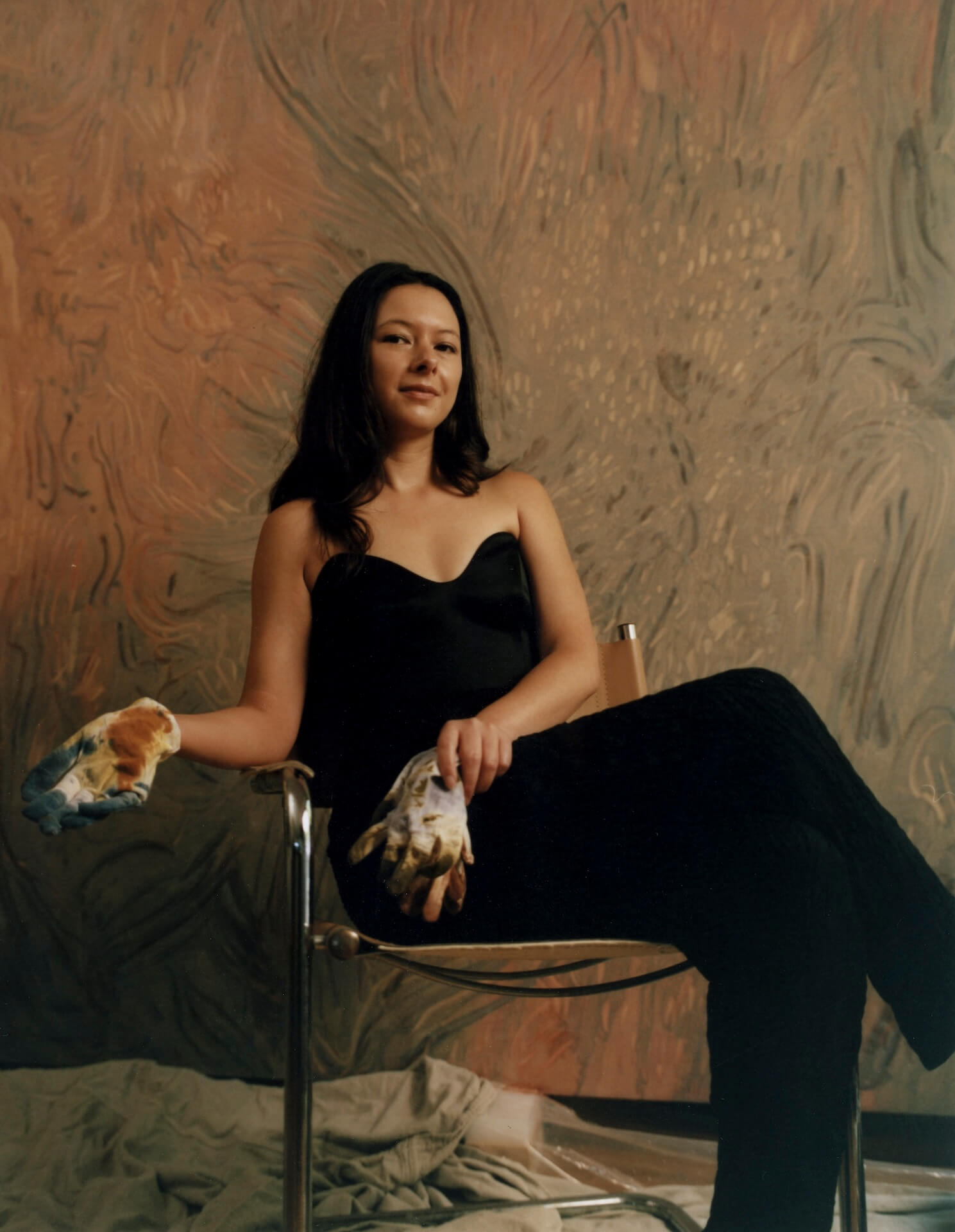Spotlight Artist Georgina Odell

WATCH
WATCH

Odell points to influences including “the confessional period of poetry, such as Audre Lorde, Anne Sexton and Adrienne Rich but I also find a lot of inspiration in music and songwriting such as Adrienne Lenker, who beautifully observes the subtle intricacies of relationships.” The resulting pieces – though apparently abstract in form – dovetail a long and ongoing engagement with writing and text, “narratives appear in fragments of text woven into fabric and scratched into the surface of metal. I am interested in the ways that language can reveal and liberate, but also how it can betray you. Words can be slippery and untrustworthy, they can honour a narrative or discredit it”, Odell explains.
Another recurrent source of inspiration is the artist’s own life – influences from childhood, memories, and the complexities and intimacy of familial relationships find their way into her works. “I play with nostalgia to explore the emotional significance of materials and objects, using school name labels as a narrative tool and giving paper fortune tellers a sculptural format by bending them out of steel.” These ubiquitous references root Odell’s personal experiences in a shared culture familiar to many, with half-concealed hints and Odell’s own past embedded within – you have to get up close to read the coded and cryptic excerpts. It feels courageous and raw. Does it make Odell feel vulnerable, putting her thoughts and feelings out in public? “Making work inspired by my own life can feel exposing, but as a result my art practice has become cathartic which has felt like a big achievement for me.”
About the champion

Nick Hornby (b.1980) is a British artist based in London. His work is an enquiry into queer identity, semiotics and the art historical canon. He is known for his public sculptures which critically engage with the core tropes of public art – equestrian, memorial and abstraction. He studied at The Slade School of Art and Chelsea College of Art. Hornby has exhibited at Tate Britain, Fitzwilliam Museum Cambridge and The Museum of Arts and Design, New York. His work has been reviewed in Frieze, Artforum, The Art Newspaper, and The New York Times. In 2022, a substantial monograph was published by Anomie Press.
“She doesn’t label herself as a sculptor, yet her work is deeply rooted in the tactile and transformative process of making.”
Nick Hornby















